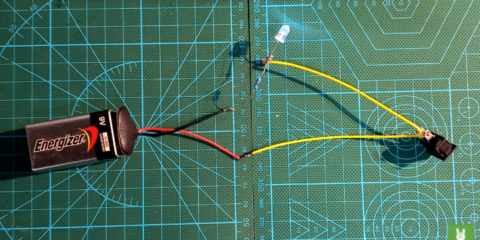Introduction to LoRa
Usually we use WiFi, Bluetooth or GSM to connect our sensor devices with the world of IoT. But what if neither of that is available (or not affordable like GSM)? Think about a bunch of environment sensors outside of the city or village in the fields or in the jungle that needs to report sensor data. What if the distance between your sensors and the gateway is more than 500m or even several kilometers?
This is where Long Range (LoRa) communication comes in handy. As a short introduction, LoRa is communicating in a license free Sub-1Ghz band, called ISM ( industrial, scientific and medical ) radio bands. While these frequencies can basically be used by anyone, there are regulations and rules that must be followed. I will not go into details here, but one explanation can be found here. If you want to learn how it physically works, there is a nice technical paper from the LoRa Alliance here.
While LoRa promises long range communication over distances of up to 20km, don’t put too much hope in this. These ranges are achieved in open areas, with no buildings, metal structures or other obstacles between the sender and receiver. And they use large antennas, often separate antennas for sending and receiving to achieve this. Here in Manila, with a small flexible antenna (see the pictures at the end of the tutorial) I could achieve ~500m range from my house with many buildings in between. In the biggest open area close to my house I got ~850m with trees as the only obstacle between sender and receiver. I most likely would get much more, but that was the length of the cemetery 😉
Overview

In this simple tutorial you will:
- Connect two ESP32 modules to two RFM95 LoRa modules
- Use ArduinoIDE to program the two ESP32 modules
- Perform a simple connection test between the two systems.
Components
Microcontroller
We will use the Espressif ESP32 microcontroller, a cheap but powerful chip that offers you a 240MHz dual core processing unit, Bluetooth, BLE and WiFi.

LoRa module
We will use the very common LoRa RFM95W Radio Transceiver module. These modules are not using the latest LoRa chip technology, but are easy to use, because there are Arduino libraries available to program them.
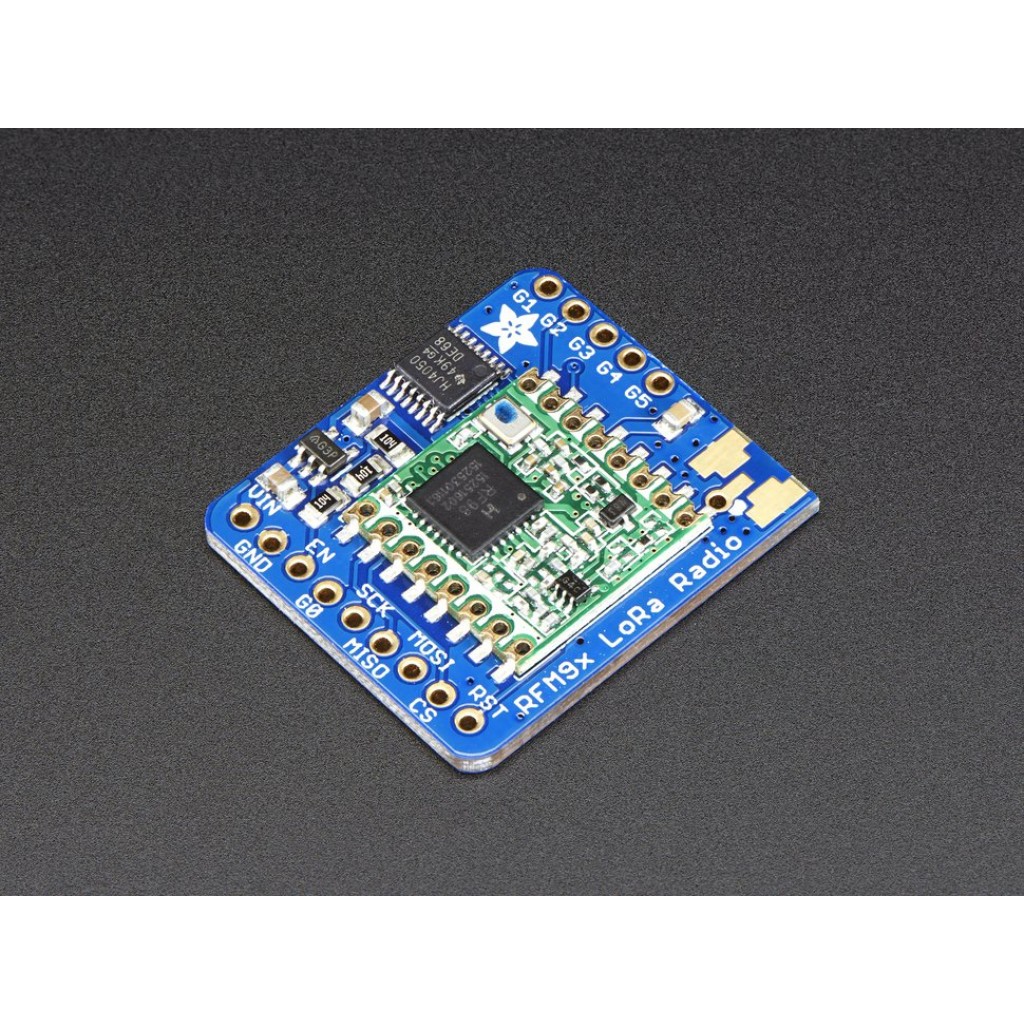
There are two versions available, one for the 433MHz frequency and this one which covers the 868 and 915MHz bands. Make sure you buy the 868/915MHz versions.
Wiring
The connections between the ESP32 and the LoRa module are quite simple. The communication uses SPI and beside of power you need one additional wire for an interrupt line.
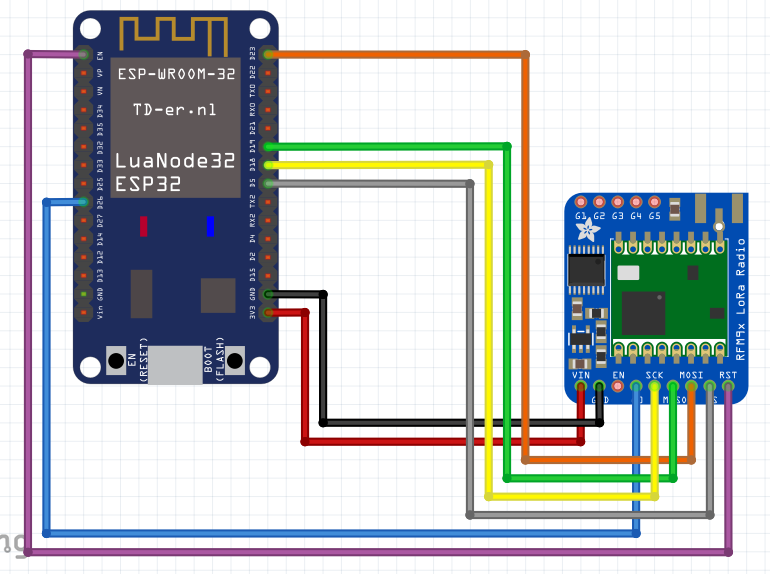
The connections
- The power pins (VIN and GND) are connected to the ESP32s power pins. The RFM95 modules work well with both 3.3V and 5V.
- The SPI pins SCK, MISO, MOSI and CS of the LoRa module are connected to the default VSPI pins of the ESP32, GPIOs 18, 19, 23 and 5.
- The DIO0 pin (G0 in the Fritzing diagram) is the interrupt signal of the LoRa module. You can connect it to any GPIO of the ESP32 that works as an input, I chose GPIO 26.
- The RST pin could be connected to an GPIO as well to be able to manually reset the LoRa module. But on the module I used (see the very first picture), there was no access to this pin, because the LoRa module was integrated on the ESP32 board. So here it is only connected to the EN pin of the ESP32, which is the ESP32s reset pin.
Libraries
There is only library required in this tutorial, and that is the RadioHead library. I couldn’t find it in the ArduinoIDE library manager. So you have to download it from here (look for the ![]() button). Save it on your harddisk and add it to ArduinoIDE by using Sketch->Include library->Add .ZIP library
button). Save it on your harddisk and add it to ArduinoIDE by using Sketch->Include library->Add .ZIP library
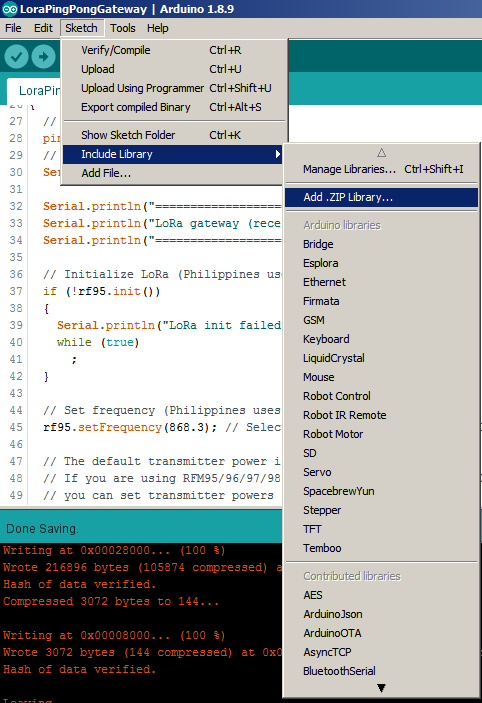
The software
We will use two sketches, that are very similar. The difference is that the sketch LoraPingPongNode will start the communication by sending a data package (PING). The sketch LoraPingPongGateway is waiting to receive a data package and will response to it with another package (PONG). Nothing more is happening here, beside that on each module a LED is flashing while the two modules are able to communicate with each other. This is perfect if you want to make some range tests and don’t have a computer attached to the ESP32s to see the debug output.
The “node” sketch
#include <Arduino.h>
#include <RH_RF95.h>
// Change this to the GPIO connected to the RFM95 SS pin
#define NSS 5
// Change this to the GPIO connected to the RFM95 DIO0 pin
#define DIO0 26
// Define a LED port if not already defined
#ifndef LED_BUILTIN
// Change this to the GPIO connected to an LED
#define LED_BUILTIN 17
#endif
// Initialize the interface
RH_RF95 rf95(NSS, DIO0);
// The Ping message will be sent by the node
char pingMsg[] = "PING";
// The Pong message will be sent by the gateway
char pongMsg[] = "PONG";
// Tracks the time stamp of last packet received
long timeSinceLastPacket = 0;
void setup()
{
// Initialize the LED port
pinMode(LED_BUILTIN, OUTPUT);
// Start serial communication
Serial.begin(115200);
Serial.println("=====================================");
Serial.println("LoRa node (sender) test");
Serial.println("=====================================");
// Initialize LoRa
if (!rf95.init())
{
Serial.println("LoRa init failed. Check your connections.");
while (true)
;
}
// Set frequency (Philippines uses same frequency as Europe)
rf95.setFrequency(868.3); // Select the frequency 868.3 MHz - Used in Europe
// The default transmitter power is 13dBm, using PA_BOOST.
// Set Transmitter power to 20dbm.
rf95.setTxPower(20, false);
}
void loop()
{
Serial.println("Sending a PING");
rf95.send((uint8_t *)pingMsg, sizeof(pingMsg));
rf95.waitPacketSent();
// Now wait for a reply
byte buf[RH_RF95_MAX_MESSAGE_LEN];
byte len = sizeof(buf);
if (rf95.waitAvailableTimeout(2000))
{
// Should be a reply message for us now
if (rf95.recv(buf, &len))
{
Serial.print("Got reply: ");
Serial.println((char *)buf);
Serial.print(" RSSI: ");
Serial.println(rf95.lastRssi(), DEC);
}
else
{
Serial.println("Receive failed, is the Gateway running?");
}
}
else
{
Serial.println("No reply, is the Gateway running?");
}
delay(500);
}
The “gateway” sketch
#include <Arduino.h>
#include <RH_RF95.h>
// Change this to the GPIO connected to the RFM95 SS pin
#define NSS 5
// Change this to the GPIO connected to the RFM95 DIO0 pin
#define DIO0 26
// Define a LED port if not already defined
#ifndef LED_BUILTIN
// Change this to the GPIO connected to an LED
#define LED_BUILTIN 17
#endif
// Initialize the interface
RH_RF95 rf95(NSS, DIO0);
// The Ping message will be sent by the node
char pingMsg[] = "PING";
// The Pong message will be sent by the gateway
char pongMsg[] = "PONG";
// Tracks the time stamp of last packet received
long timeSinceLastPacket = 0;
void setup()
{
// Initialize the LED port
pinMode(LED_BUILTIN, OUTPUT);
// Start serial communication
Serial.begin(115200);
Serial.println("=====================================");
Serial.println("LoRa node (sender) test");
Serial.println("=====================================");
// Initialize LoRa
if (!rf95.init())
{
Serial.println("LoRa init failed. Check your connections.");
while (true)
;
}
// Set frequency (Philippines uses same frequency as Europe)
rf95.setFrequency(868.3); // Select the frequency 868.3 MHz - Used in Europe
// The default transmitter power is 13dBm, using PA_BOOST.
// Set Transmitter power to 20dbm.
rf95.setTxPower(20, false);
}
void loop()
{
if (rf95.available())
{
// Should be a message for us now
uint8_t buf[RH_RF95_MAX_MESSAGE_LEN];
uint8_t len = sizeof(buf);
if (rf95.recv(buf, &len))
{
digitalWrite(LED_BUILTIN, HIGH); //Turn on status LED
timeSinceLastPacket = millis(); //Timestamp this packet
Serial.print("Got message: ");
Serial.print((char *)buf);
Serial.print(" RSSI: ");
Serial.print(rf95.lastRssi(), DEC);
Serial.println();
// Send a reply
rf95.send((uint8_t *)pongMsg, sizeof(pongMsg));
rf95.waitPacketSent();
Serial.println("Sent a reply");
digitalWrite(LED_BUILTIN, LOW); //Turn off status LED
}
else
Serial.println("Receive failed, is the node running?");
}
//Turn off status LED if we haven't received a packet after 1s
if (millis() - timeSinceLastPacket > 1000)
{
digitalWrite(LED_BUILTIN, LOW); //Turn off status LED
timeSinceLastPacket = millis(); //Don't write LED but every 1s
}
}
This software as it is doesn’t do anything useful, but it is the basic to understand how to connect the LoRa modules to an ESP32 and write some software to use it.
In my next learning blog we will connect sensors to the “node” ESP32, run it from battery and learn how we reduce the power consumption of the ESP32 to be able to run it over longer time without recharging the battery.
Once both modules are programmed and powered up, you will see a LED blinking on both modules and on the USB debug output you will see
=====================================
LoRa node (sender) test
=====================================
Got reply: PONG
RSSI: -45
Got reply: PONG
RSSI: -45
Got reply: PONG
RSSI: -45
Got reply: PONG
RSSI: -45
Got reply: PONG
RSSI: -45
Got reply: PONG
RSSI: -45
Got reply: PONG
RSSI: -44
Got reply: PONG
RSSI: -43
Got reply: PONG
RSSI: -45on the nodes output and
=====================================
LoRa gateway (receiver) test
=====================================
Found ESP32 define
Got message: PING RSSI: -18
Sent a reply
Got message: PING RSSI: -25
Sent a reply
Got message: PING RSSI: -26
Sent a replyon the gateways output.
An important remark!
When you look to the LoRa modules, most of these cheap modules do not have an antenna connector. The instructions just say to solder a piece of copper wire to the antenna pin and you are ready to use it.
That is correct, but you should not expect to reach large ranges with such a solution. If you want to go for 500m, 1km or farther, you will need a proper tuned LoRa antenna. Most LoRa antennas are for a frequency range of 800MHz to 950MHz.
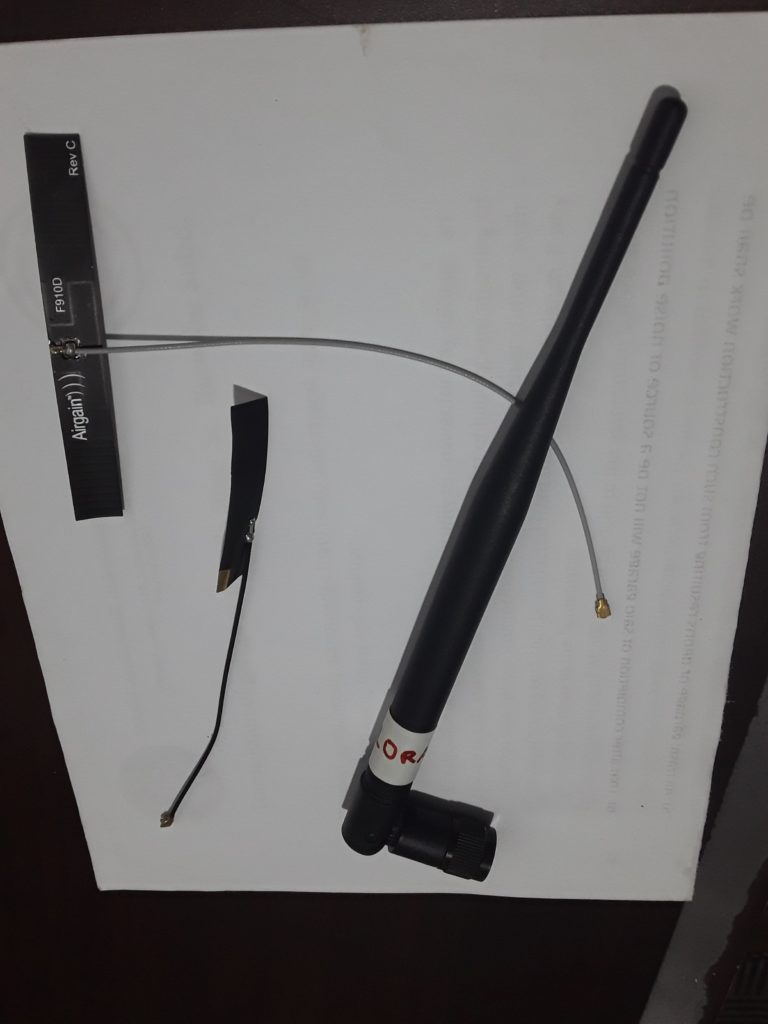
Interesting enough, the smaller flexible antennas shown on the picture have a better performance than the big one. It is all about how good the antennas are tuned for the frequency.


